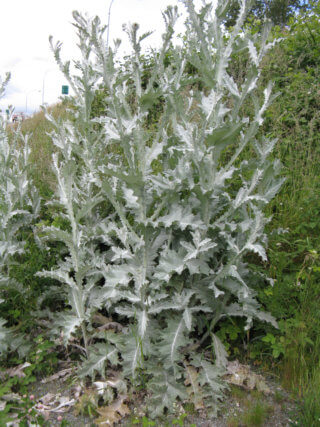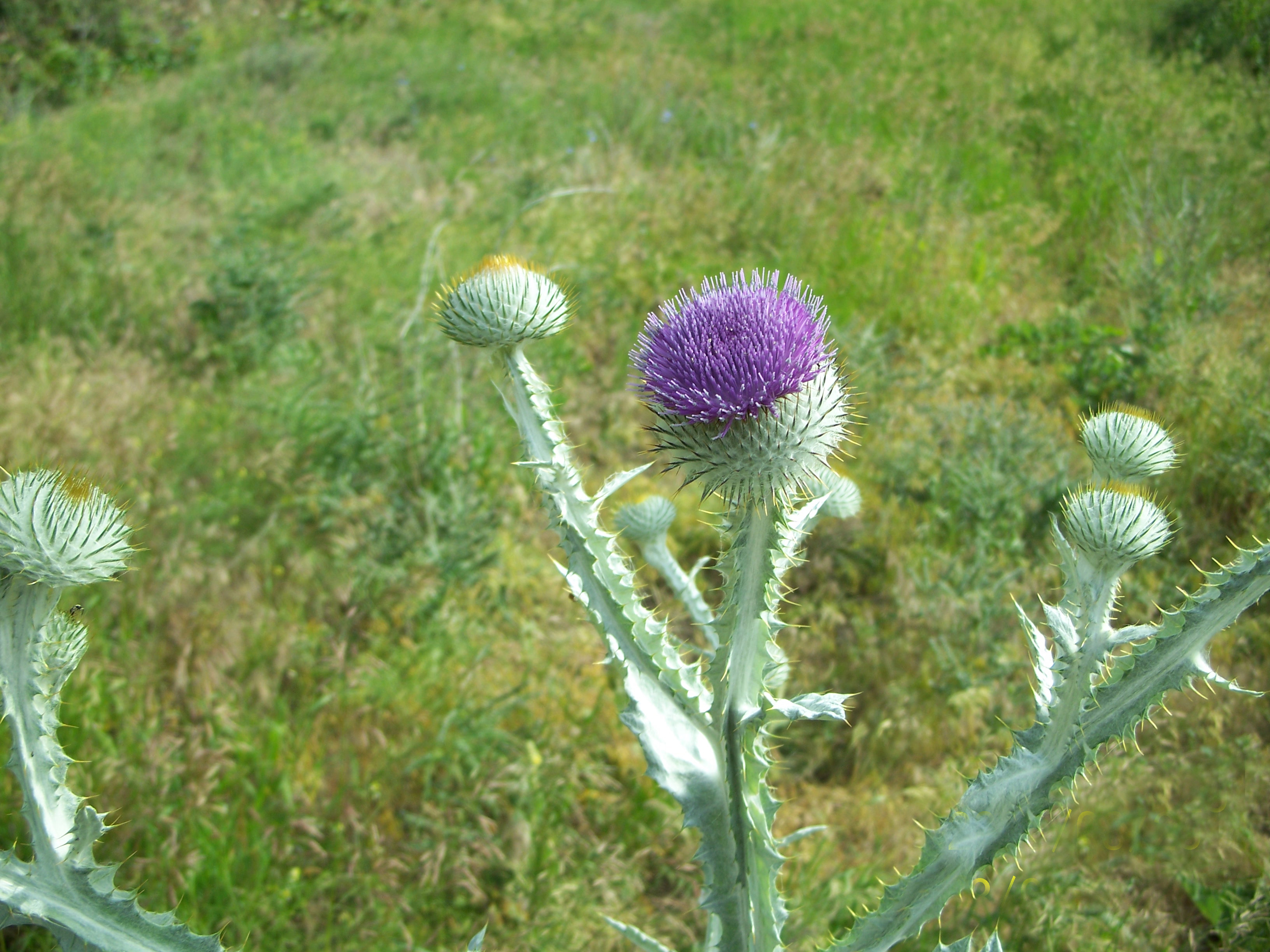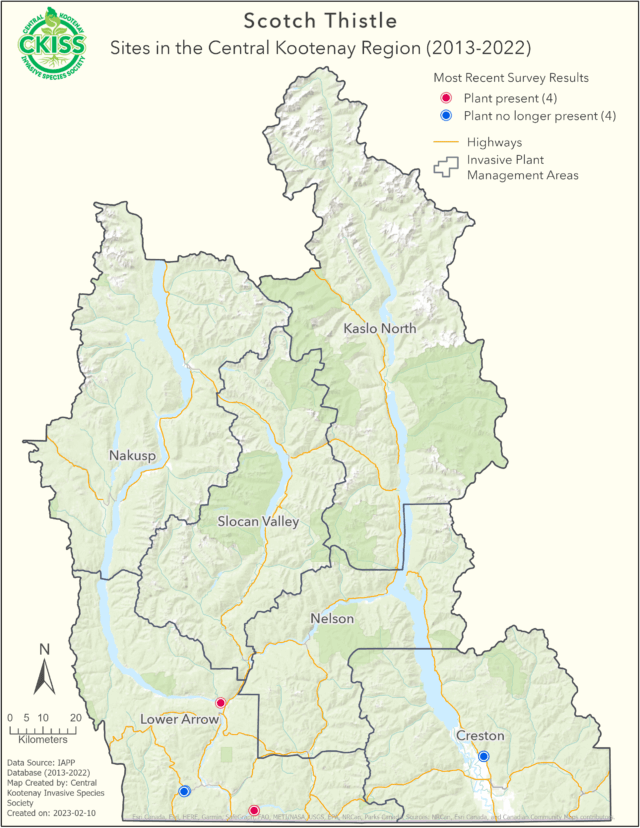Onopordum acanthium
Description
- Biennial or perennial member of the Asteraceae family.
- Can grow over two metres in height.
- Branched, wooly stems with spiny wings.
- Large purple flower heads.
- Tolerates a variety of soils, prefers moist soils.
- Compared to bull thistle, scotch thistle has larger flowerheads and leaves that are woolly, while bull thistle leaves are mostly smooth.

Consequences of invasion
- May be competitive with native vegetation in rangelands.
- Forms dense stands that are impenetrable to livestock and impact recreational sites and trails.
Introduction and spread
- Native to Europe.
- Seeds can be transported by wind as well as attaching to clothing, animal fur and machinery.
Status in the CKISS region
- Scotch thistle is classified as Eradicate on the CKISS Annual Priority List.
- It has been found with a limited distribution in the CKISS region, therefore eradication is the goal and is feasible.
- Please report ALL findings of this species immediately.
- To learn more about how CKISS classifies and manages invasive species, see our Invasive Species Priority Lists page.
Integrated pest management options
- Prevent the spread of this plant by following CKISS tips.
- Be PlantWise and avoid introducing scotch thistle to your garden.
- Monitor at-risk areas (moist and/or disturbed sites) regularly to identify this plant while infestations are still manageable.
- Pull or dig small infestations when soil is moist and before seeds have set.
- Cut a few inches below the soil surface.
- Mow or slash before seed set. Plants can reproduce from fragments, so monitoring and hand-cutting/pulling is still required after mowing.
- Chemical control may be appropriate for larger infestations.
- Establish perennial grasses or other appropriate plants and monitor their success over time.


